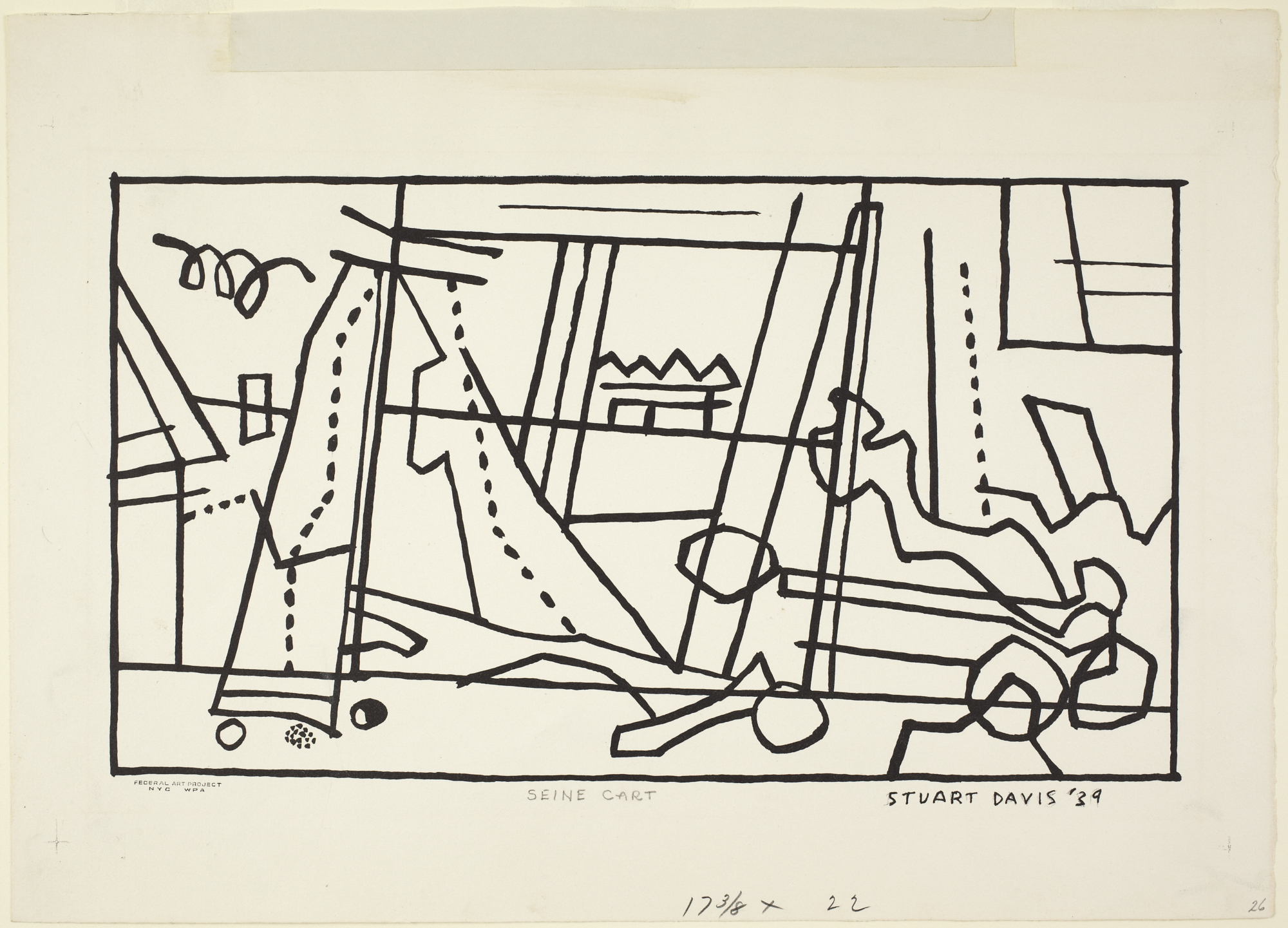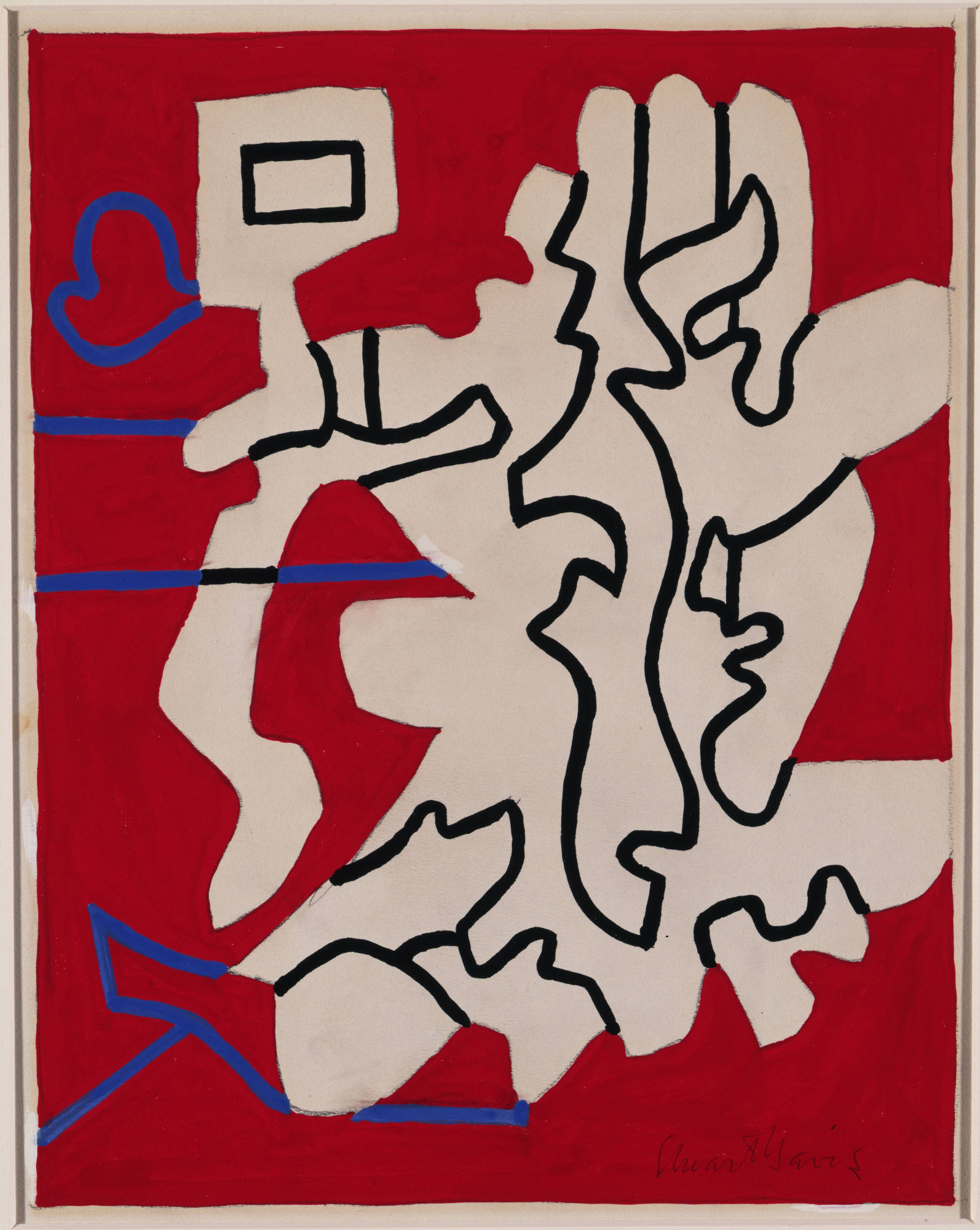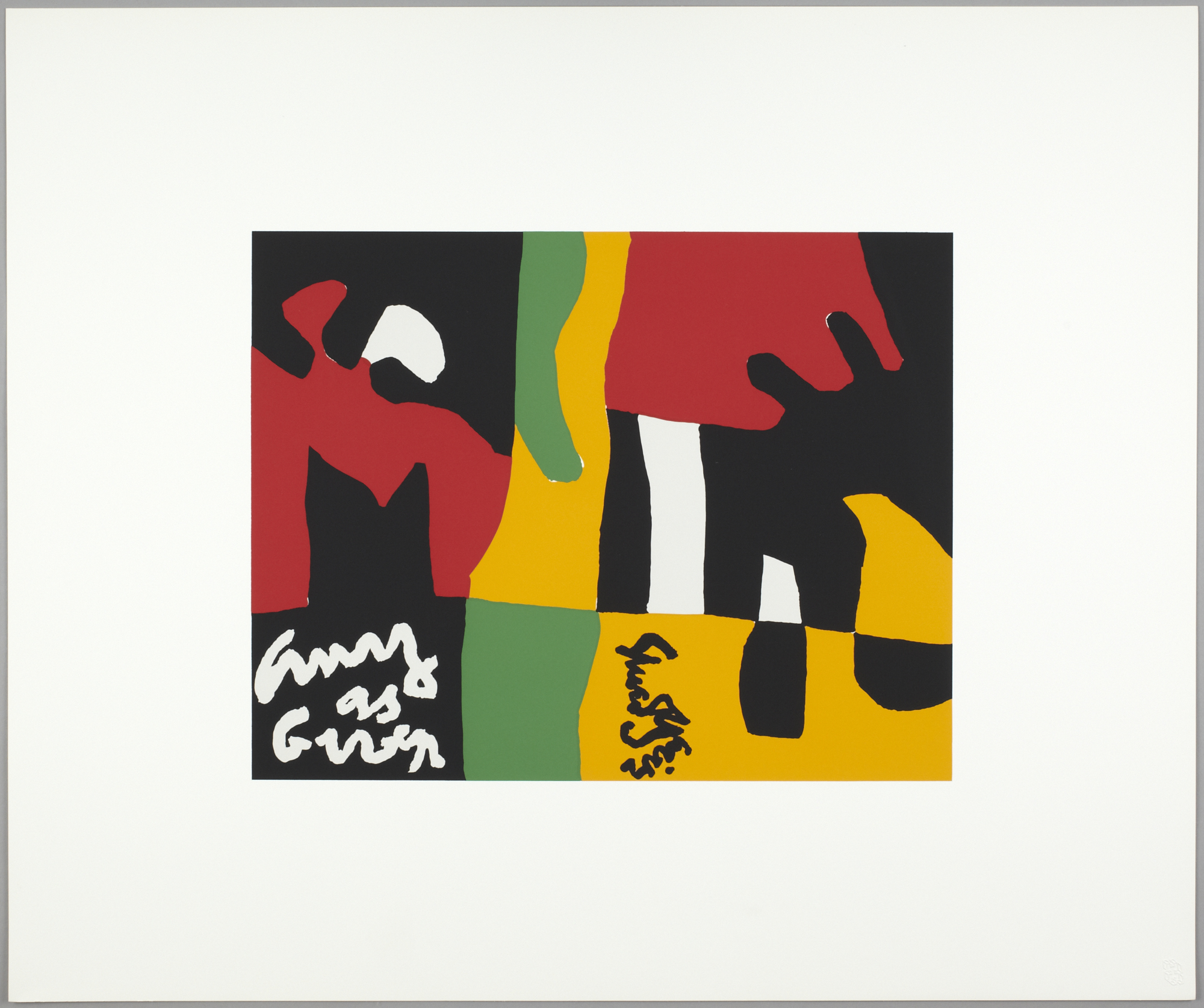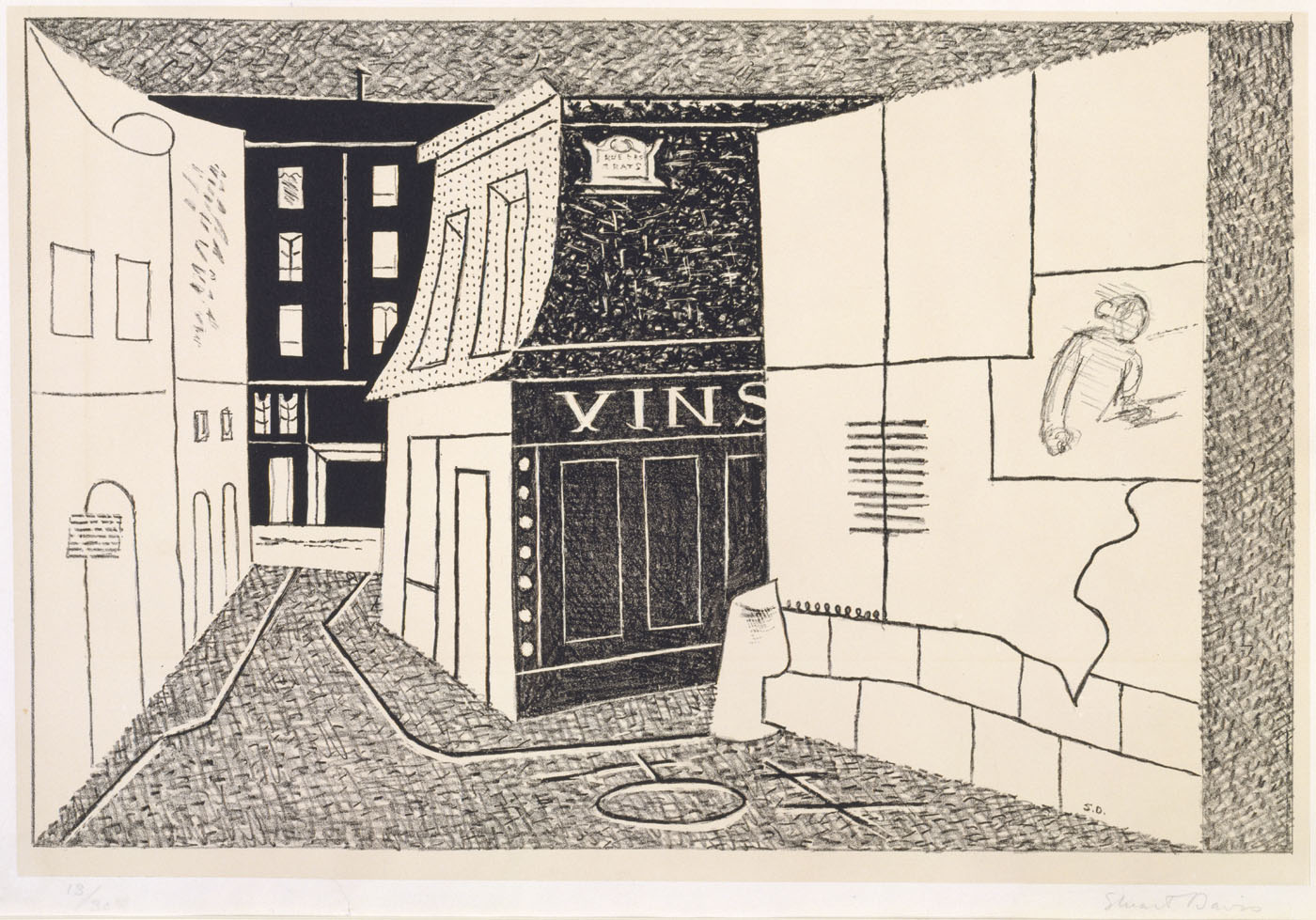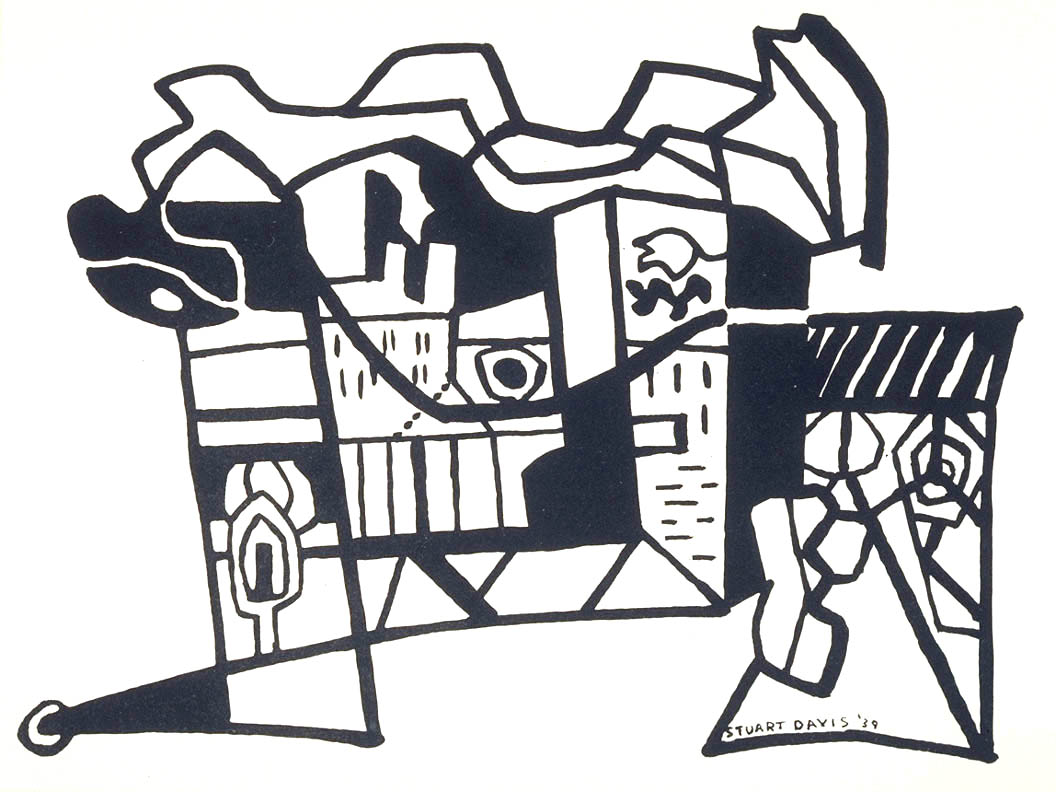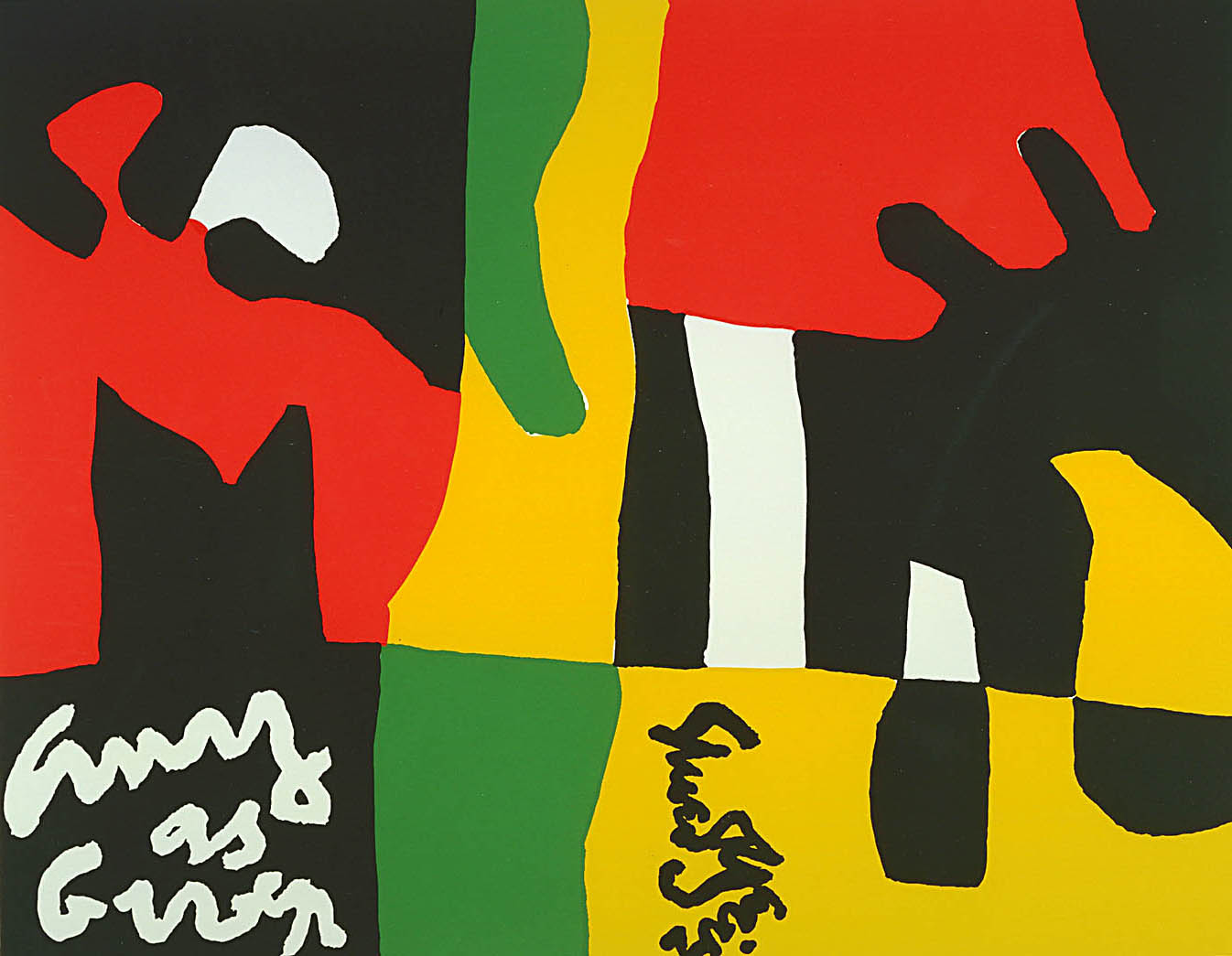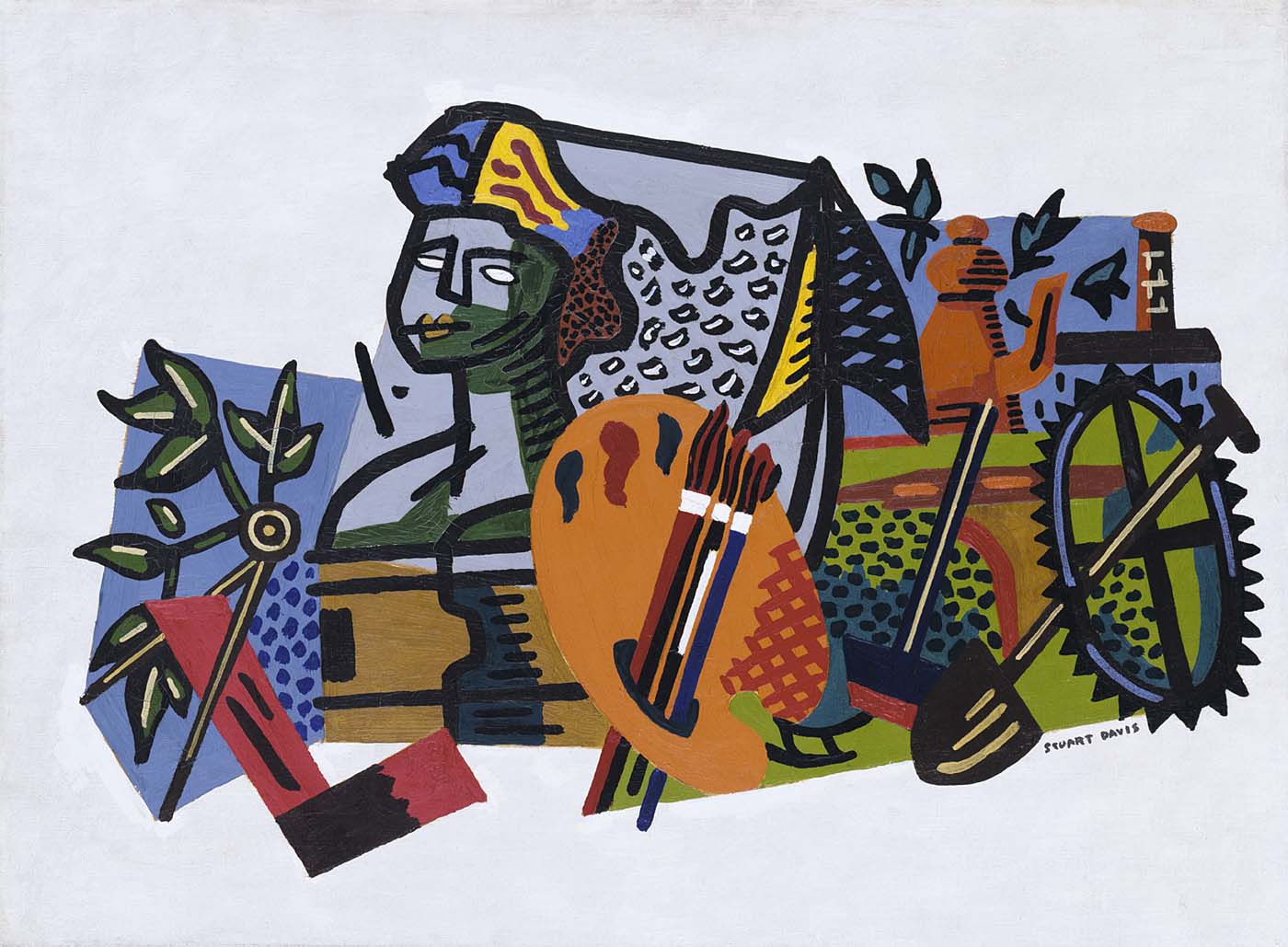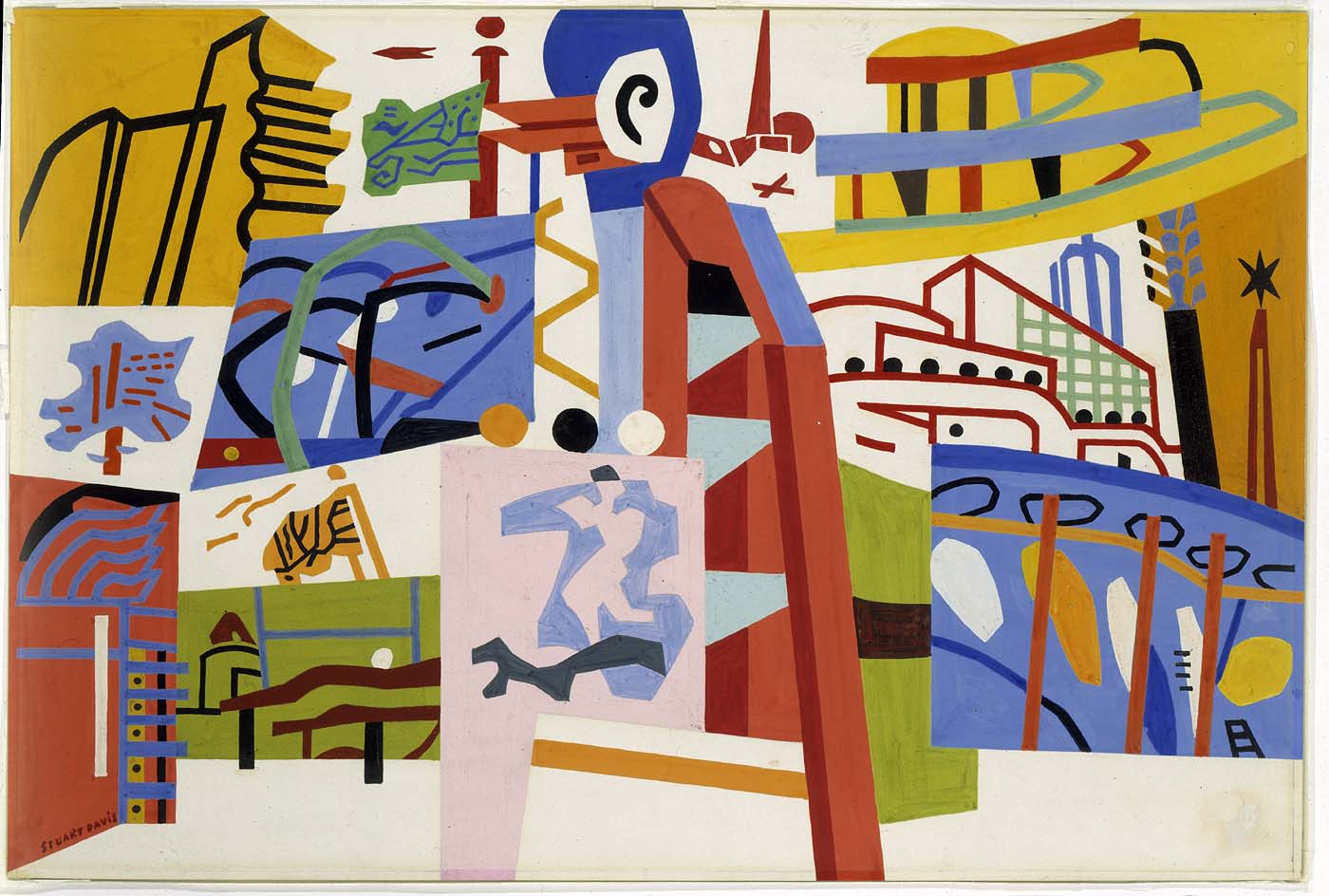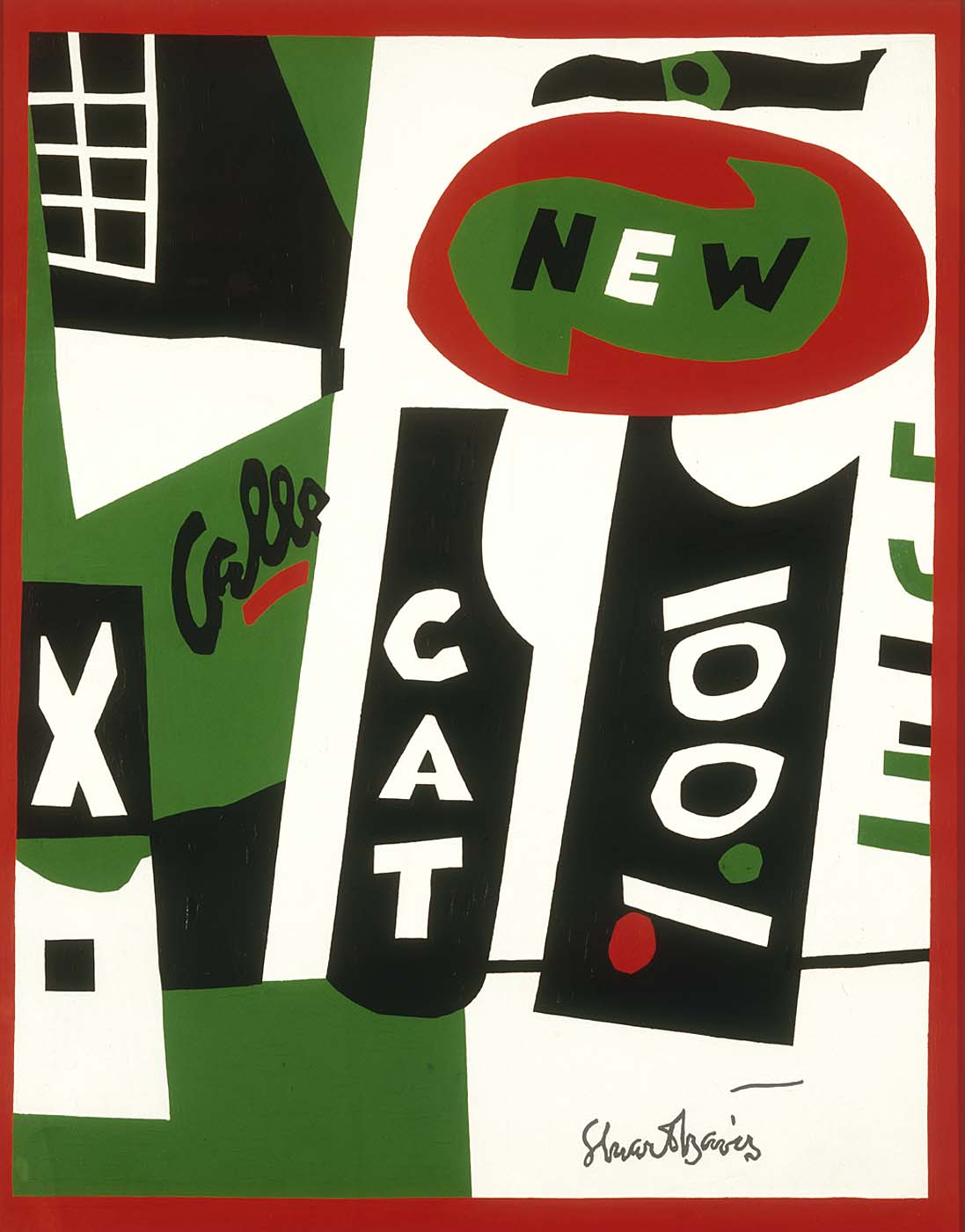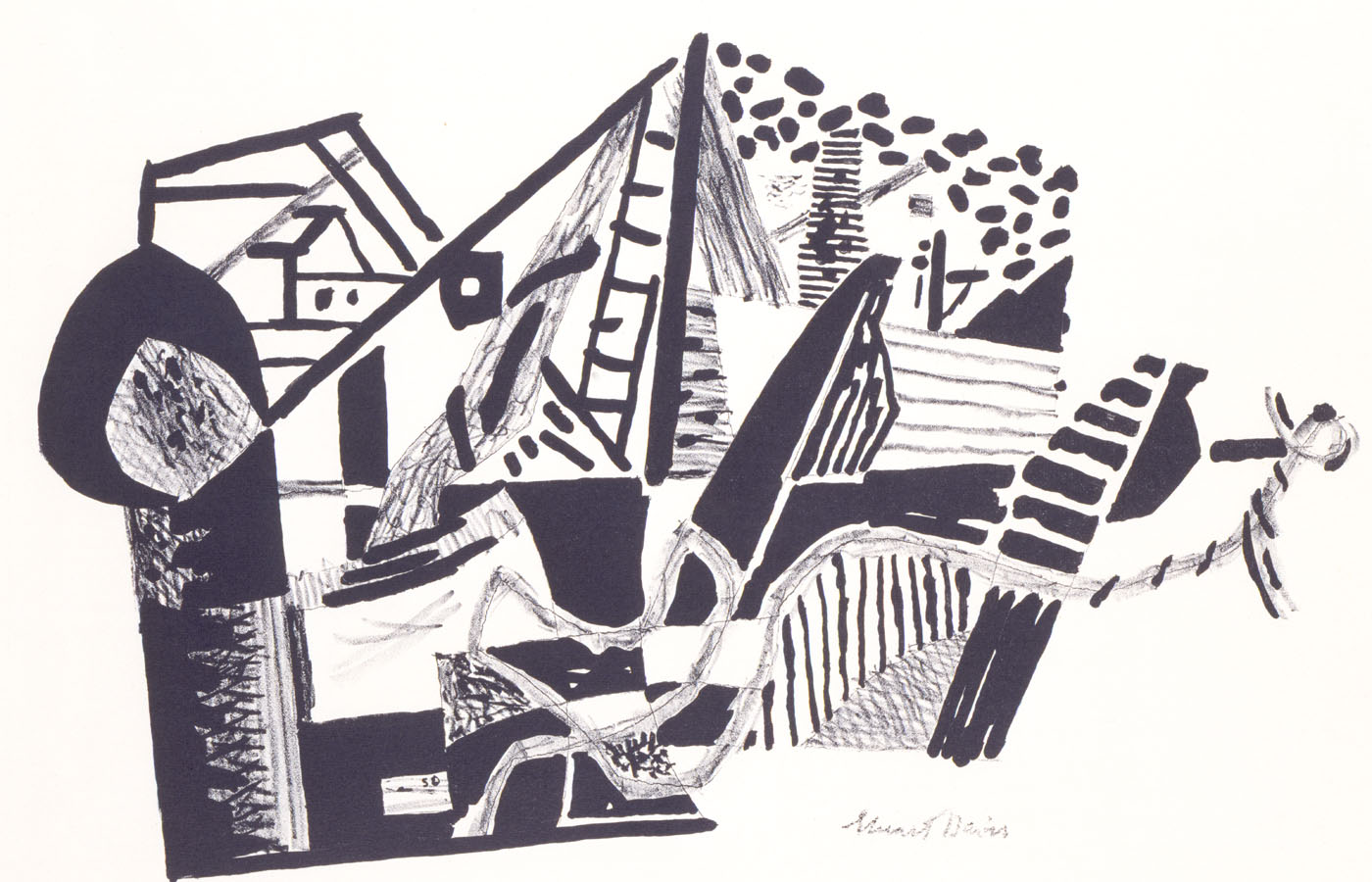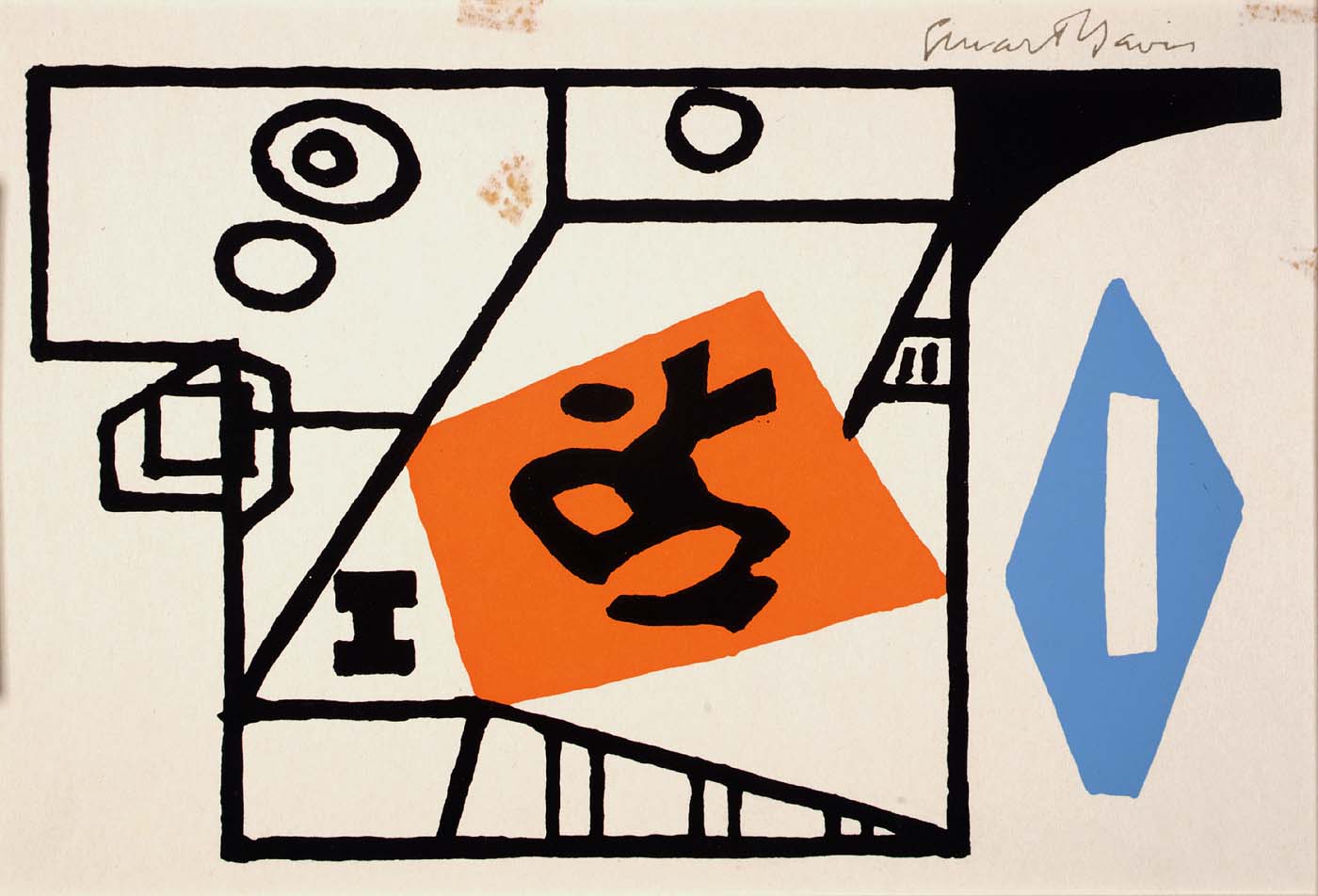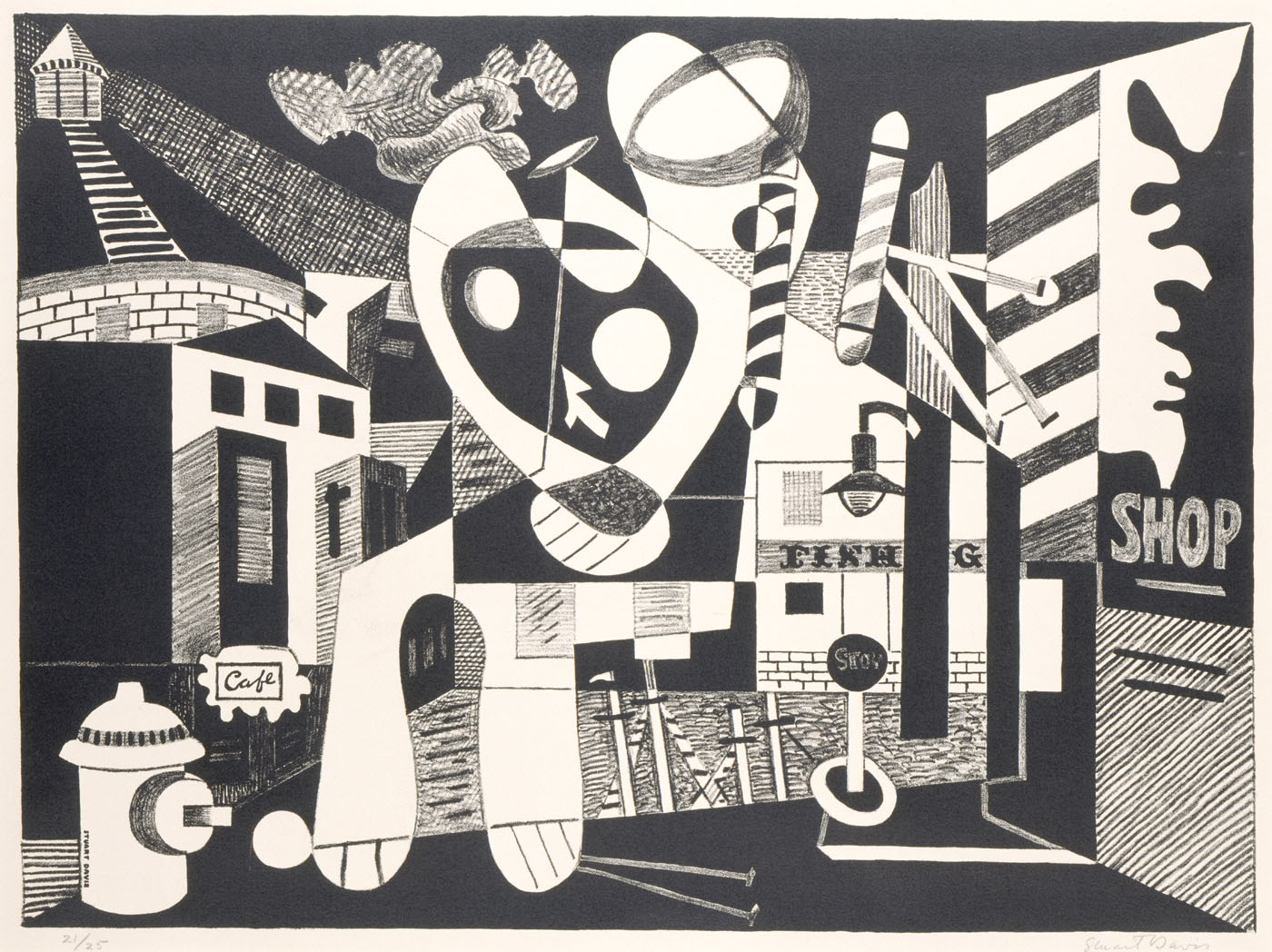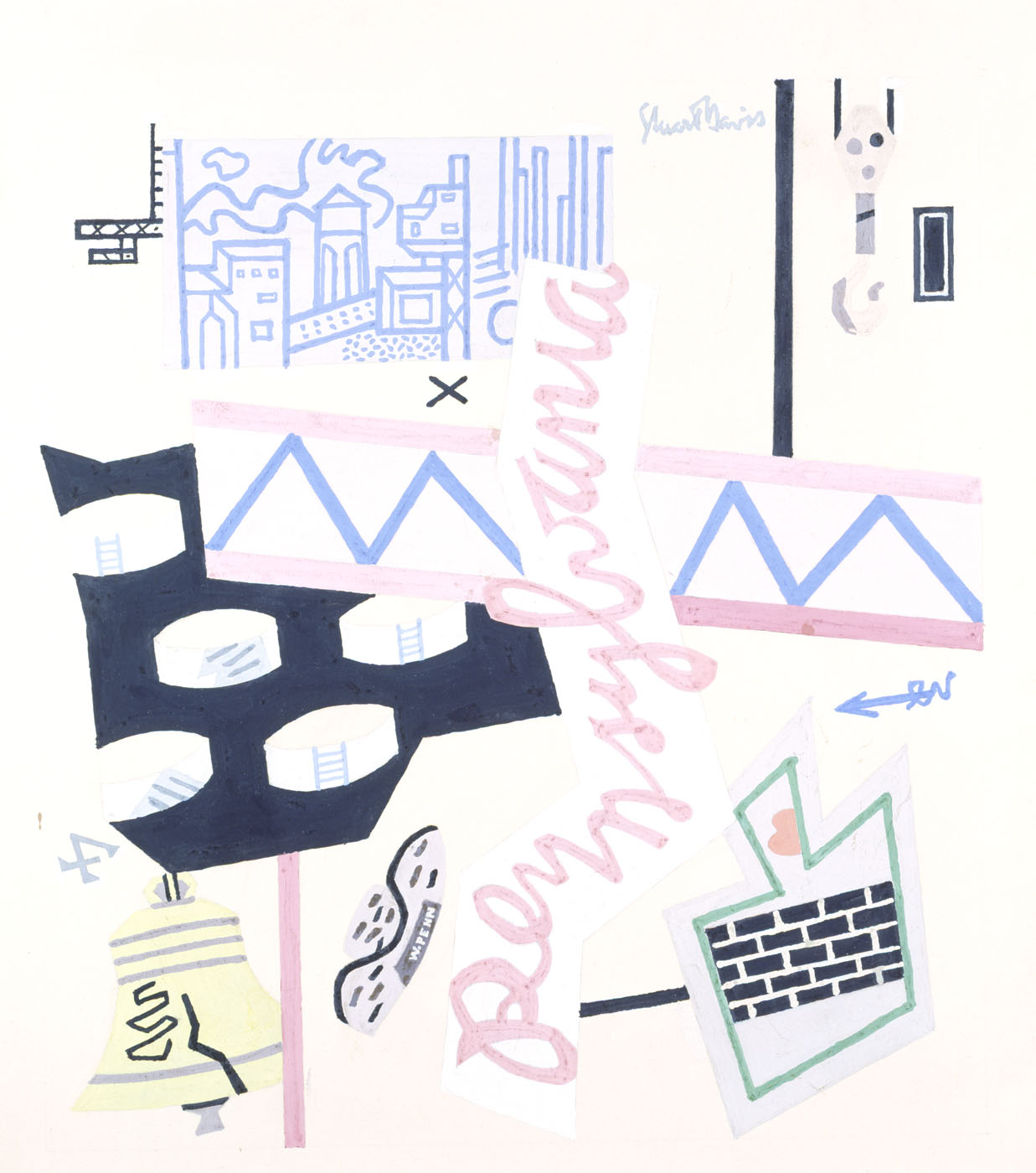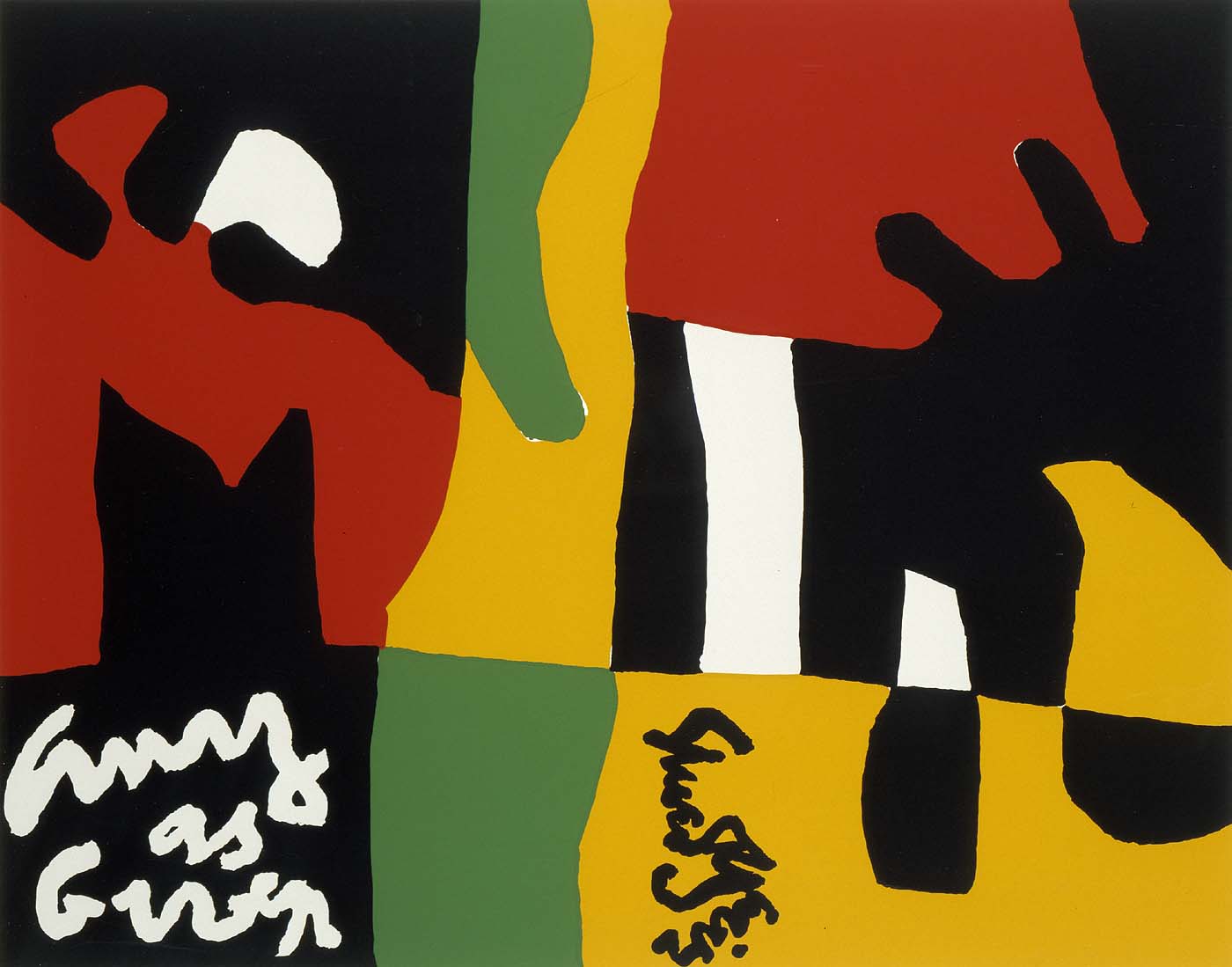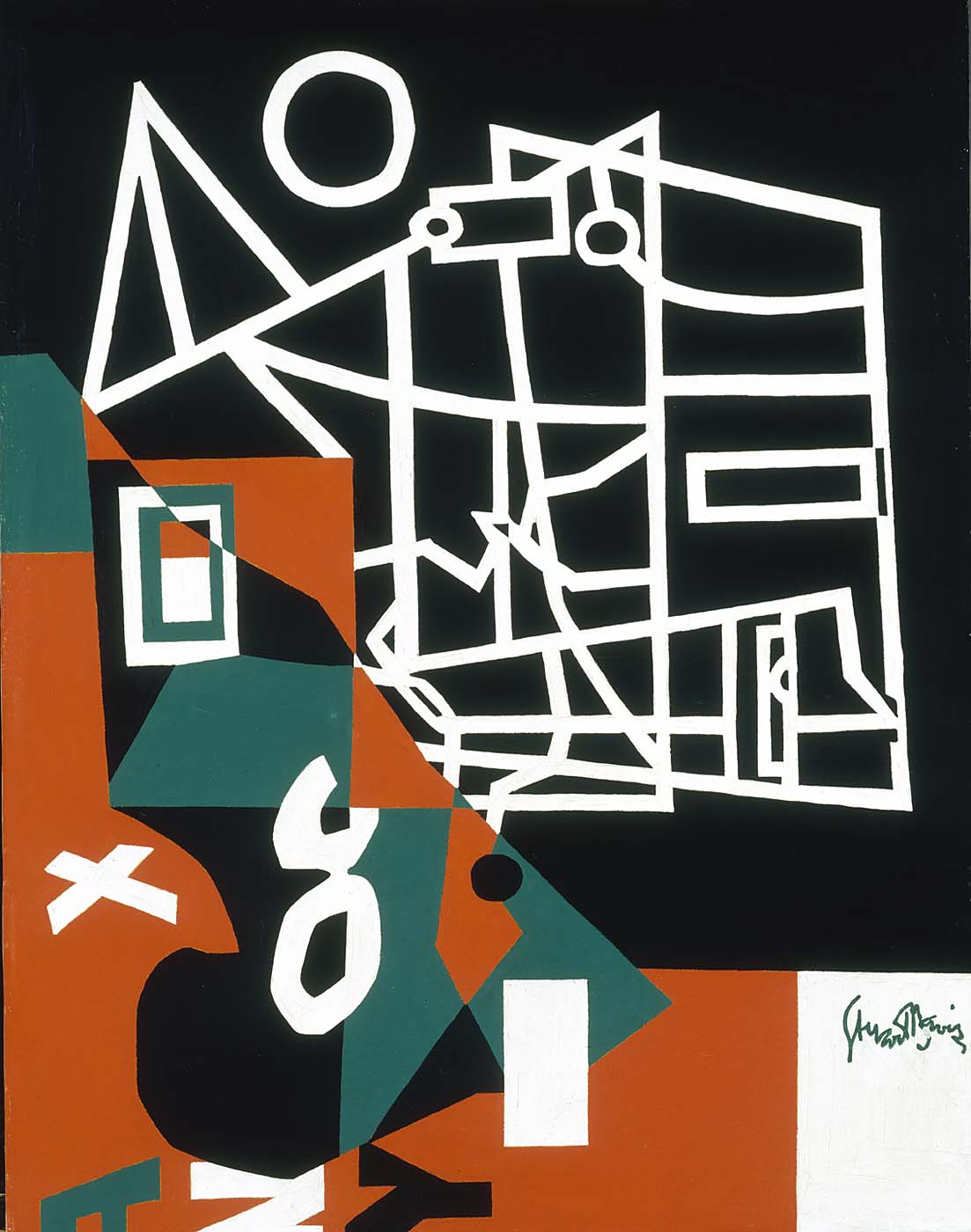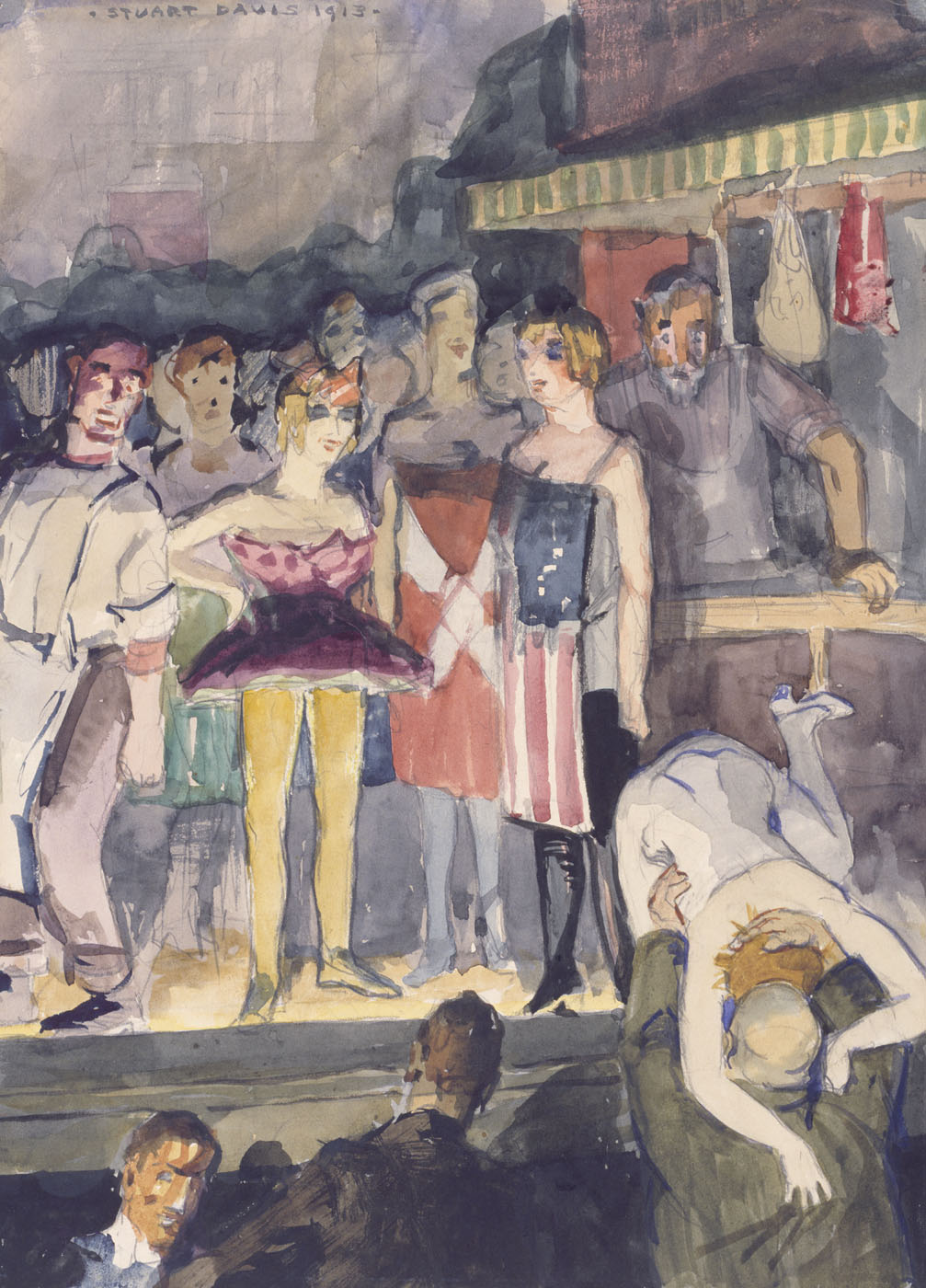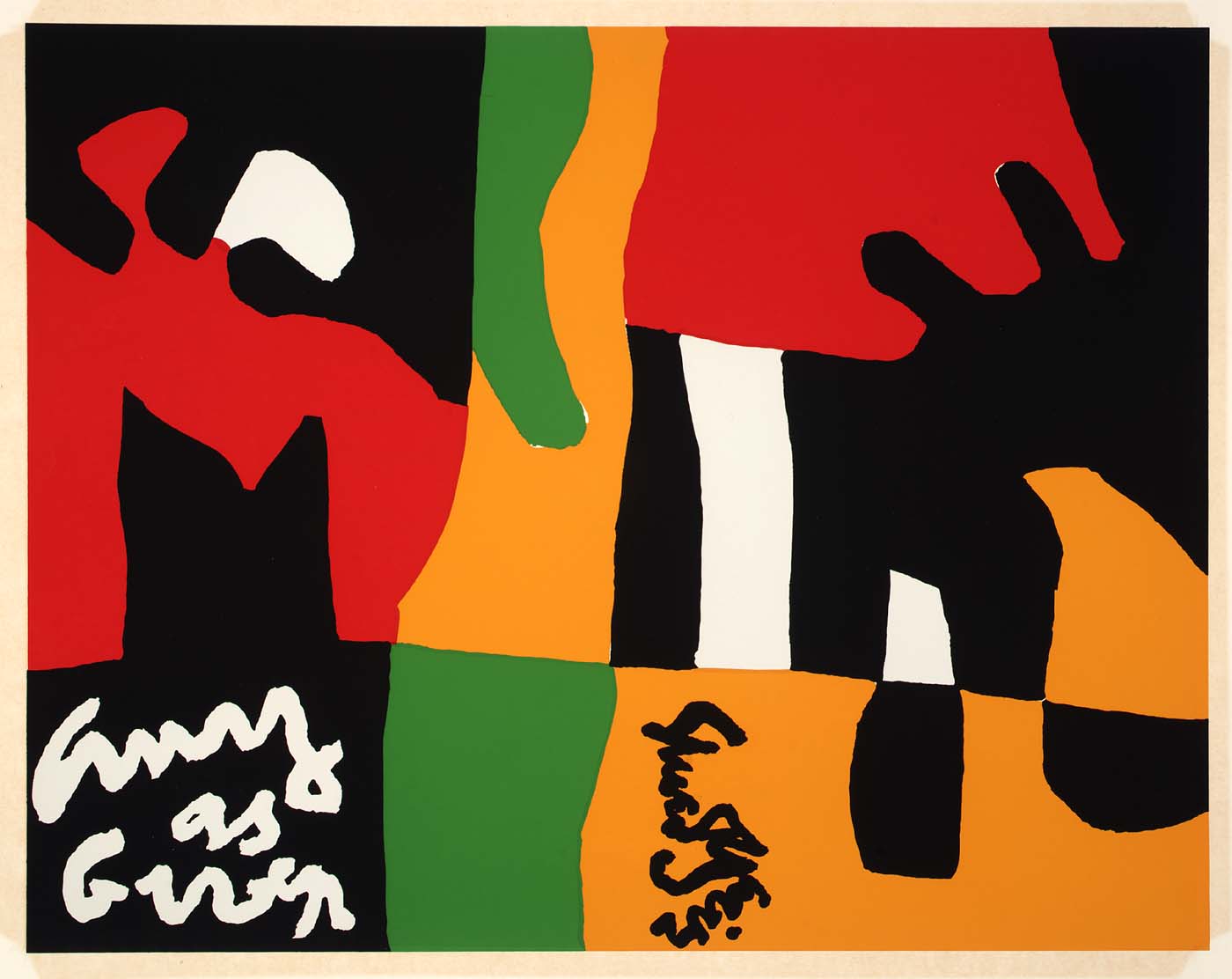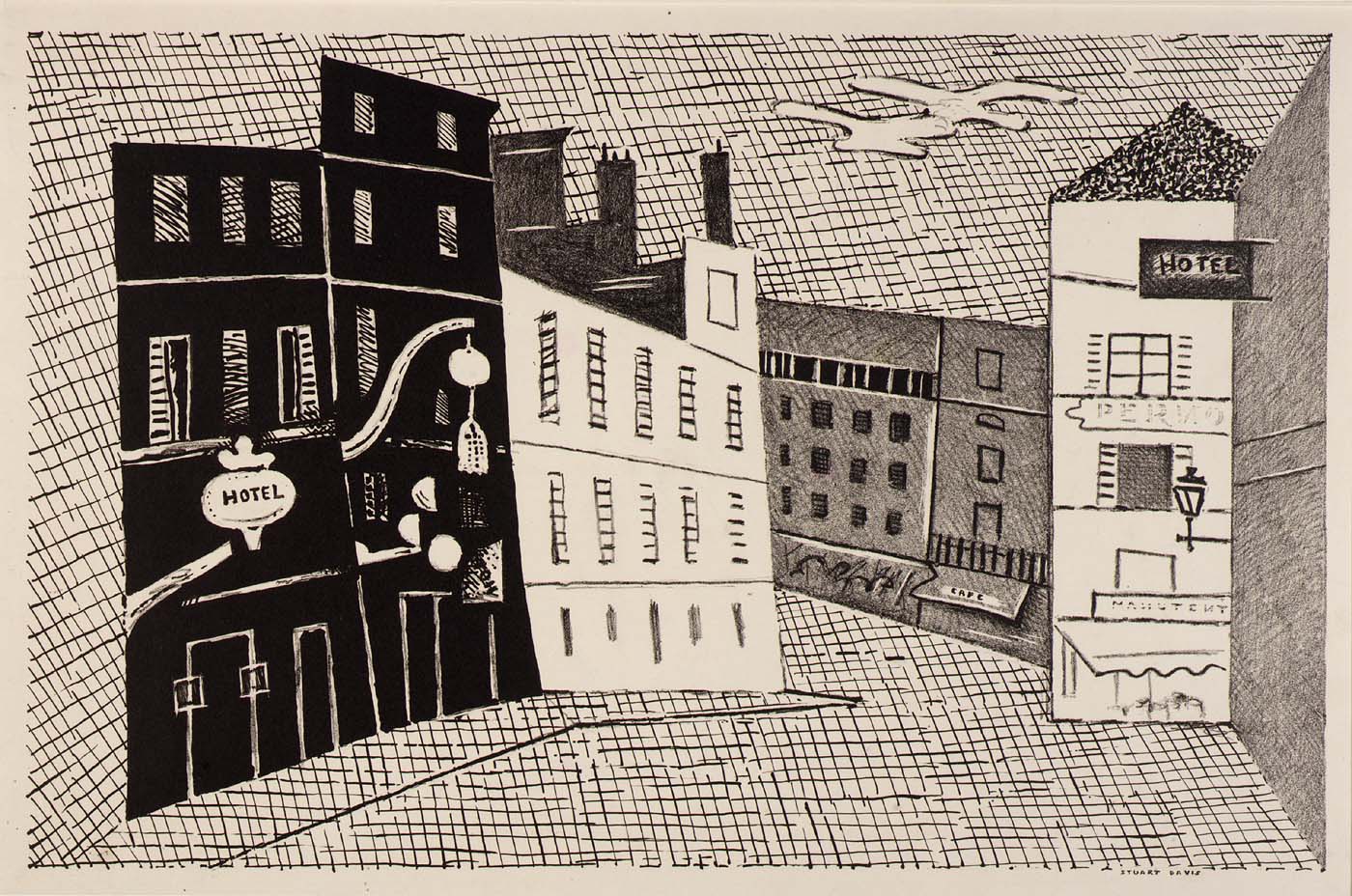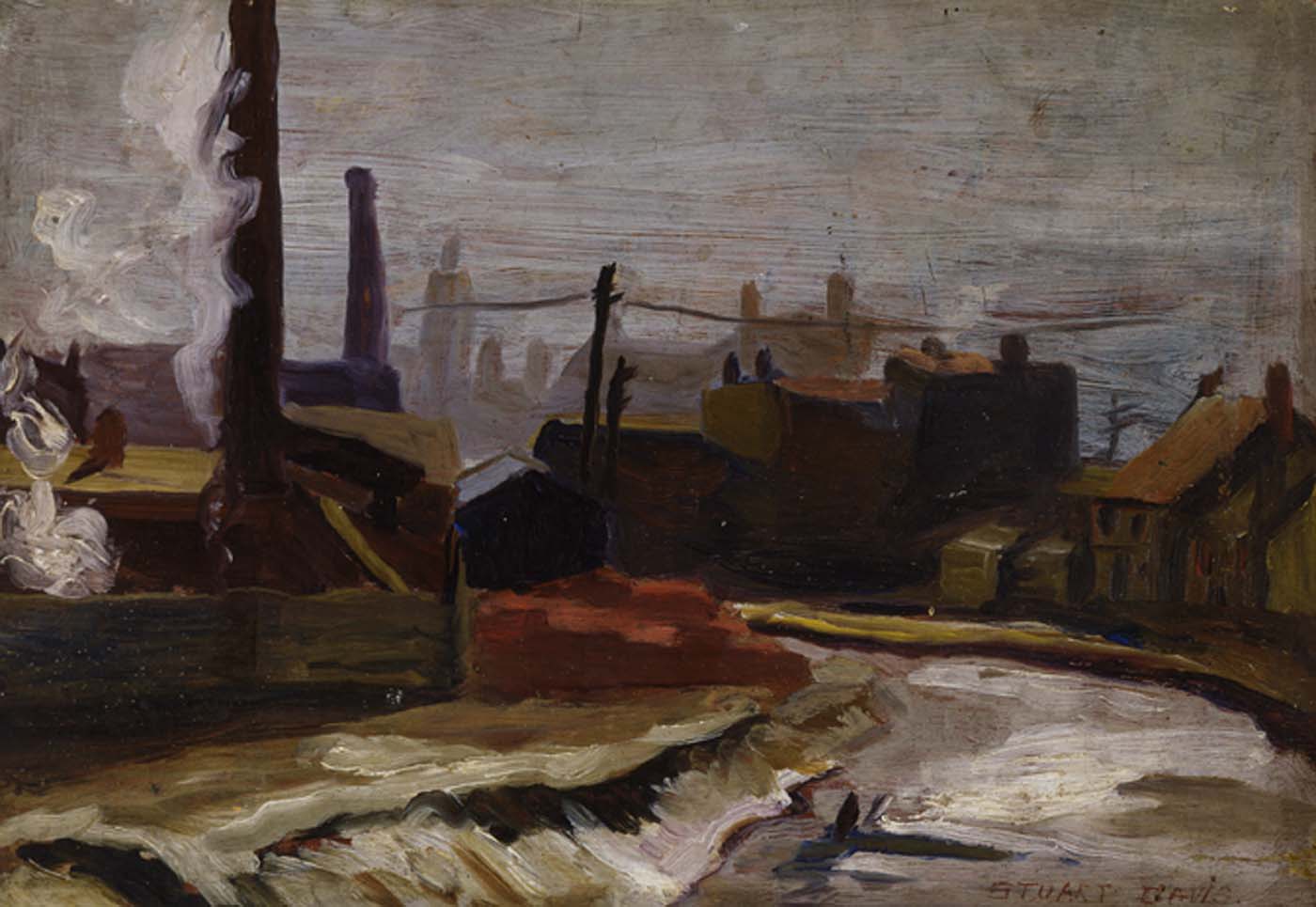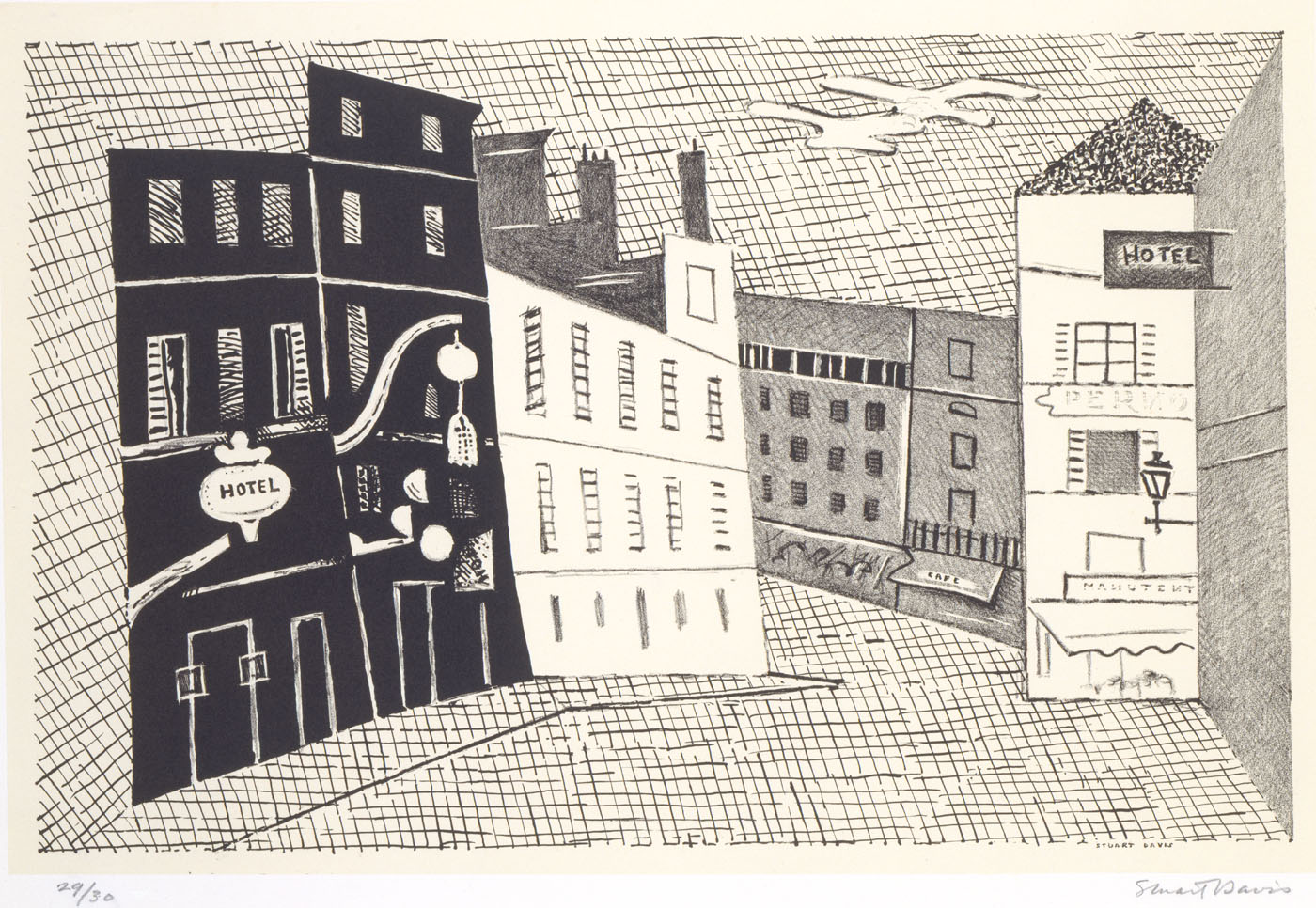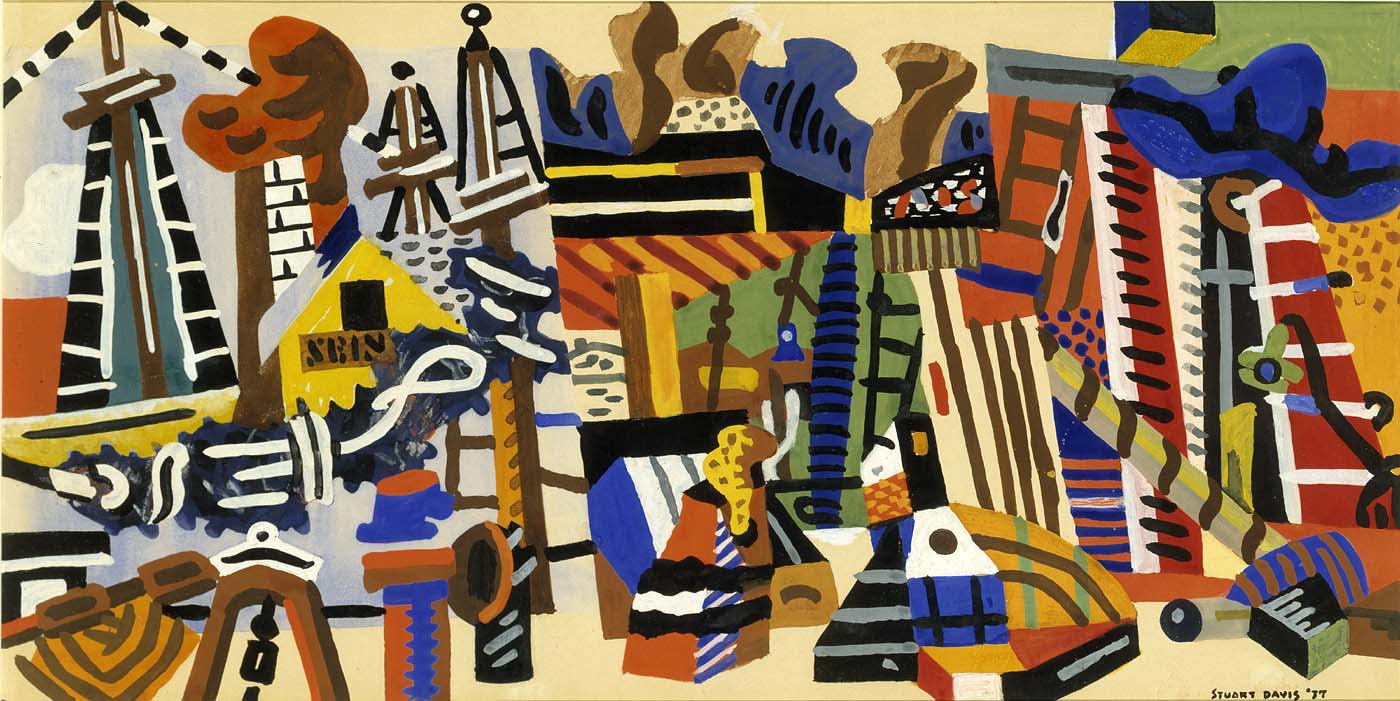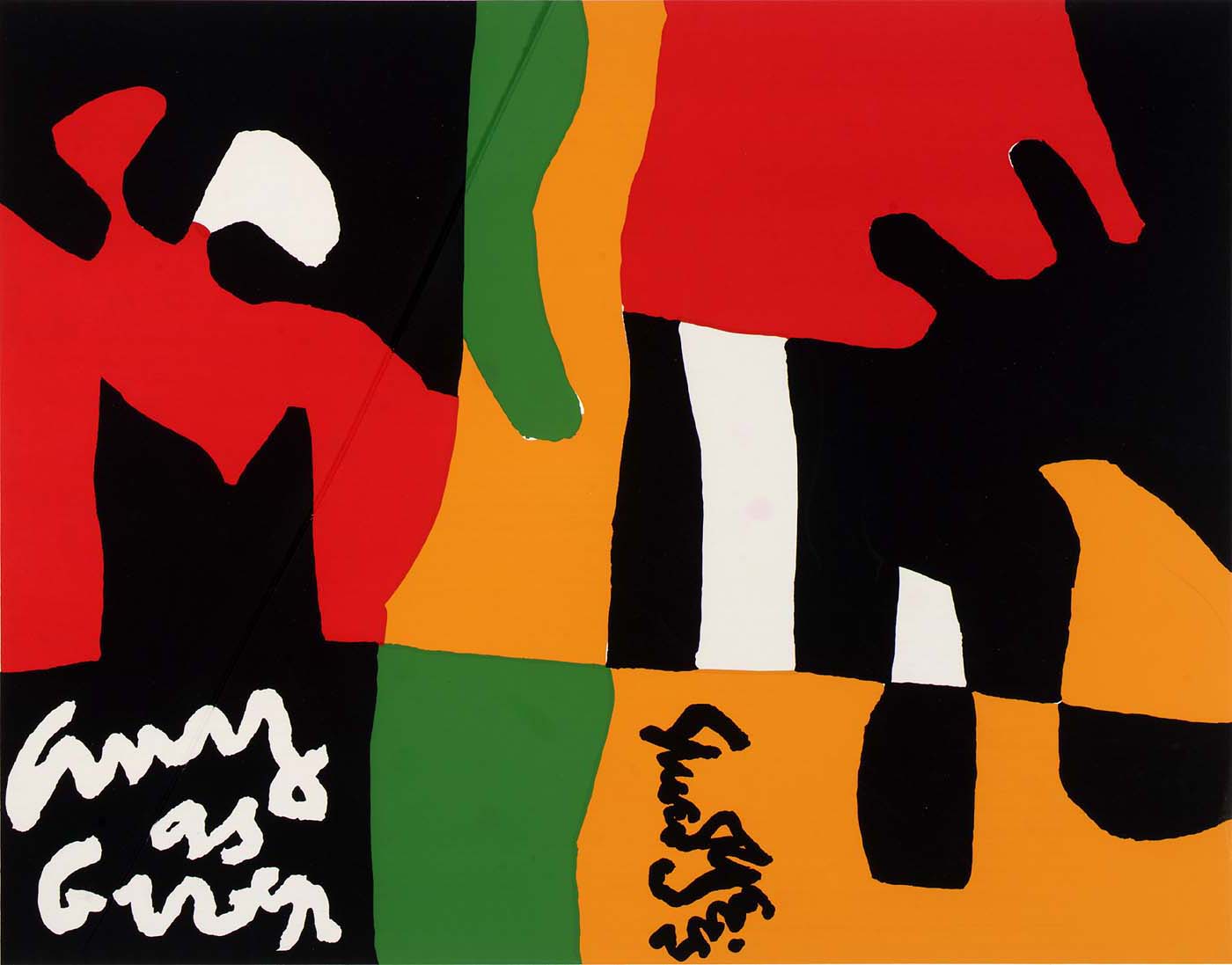Stuart Davis
Stuart Davis's anti-establishment view of life was informed by that of his parents, who both trained at The Pennsylvania Academy of the Fine Arts. His family and their bohemian circle of friends were instrumental in forming his progressive social views. An intense interest in "Americanness"—understood in terms of his Philadelphia background as well as a commercial and working-class present—formed a part of these views. Perhaps surprising to us, in an article in The Soil (an early avant-garde magazine) Davis listed an appreciation of colonial architecture as a proper subject for "young, robust . . . daring" American art, a viewpoint Davis recalled enthusiastically at the end of his life. Davis first went to Gloucester in 1915 with other artists working for the radical magazine The Masses, and ill subsequent years he spent most summers there. He referred to himself as an "addict of the New England coast," but his modernist eye made him look at typical New England subjects with a combination of humor and irony. Masts of old fishing schooners, for example, are seen among fish processing plants, gas pumps, and commercial signs. Despite critics' applause, steady exhibitions, and early patronage from Gertrude Vanderbilt Whitney, Davis had trouble selling his work and only began to make a comfortable living in the 1950s. Nevertheless, his continually evolving approach to both urban and rural subjects, ant his active pursuit of artists' rights, kept him at the forefront of the modernist movement.
Virginia M. Mecklenburg Modern American Realism: The Sara Roby Foundation Collection (Washington, D.C.: Smithsonian Institution Press for the National Museum of American Art, 1987







